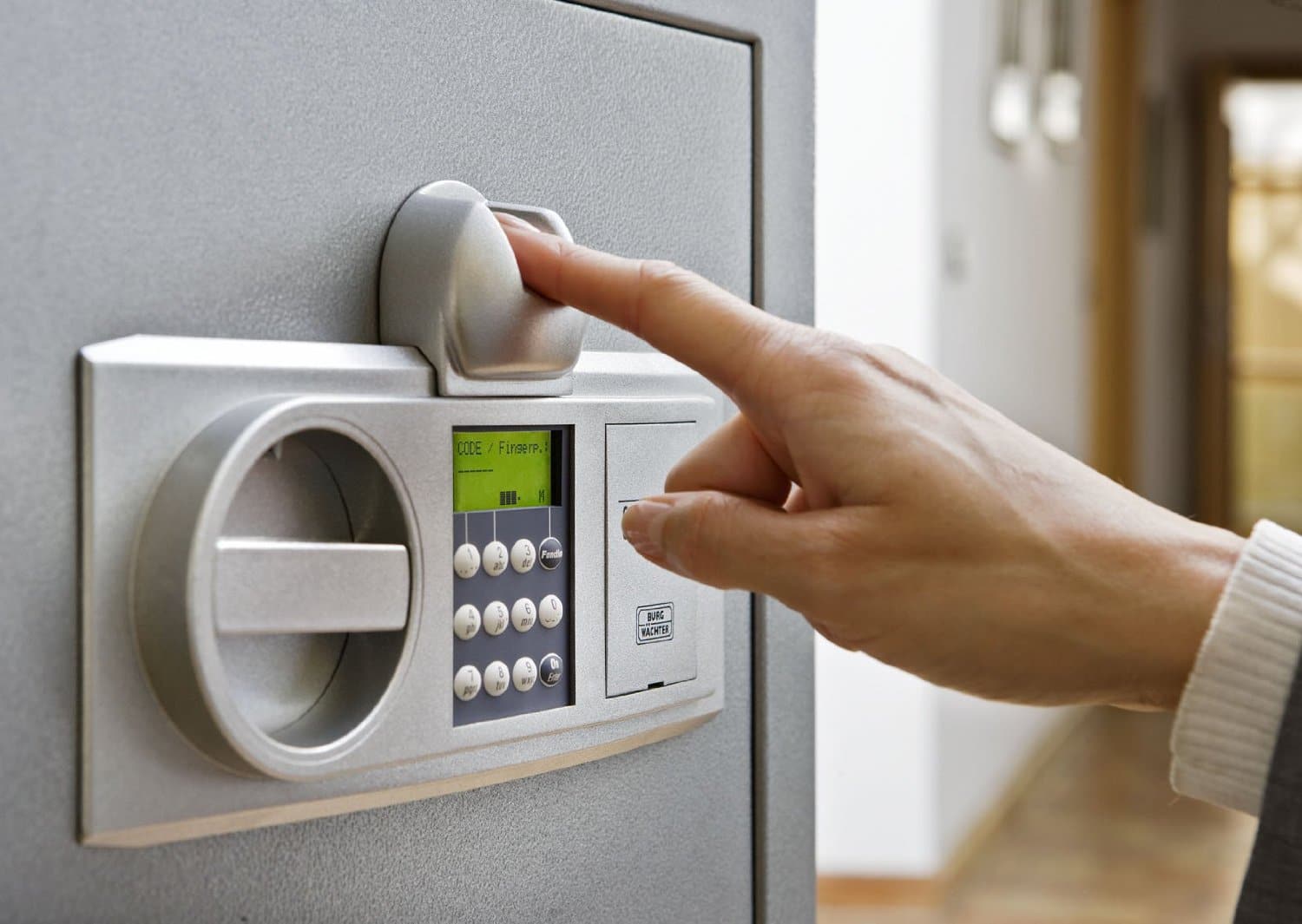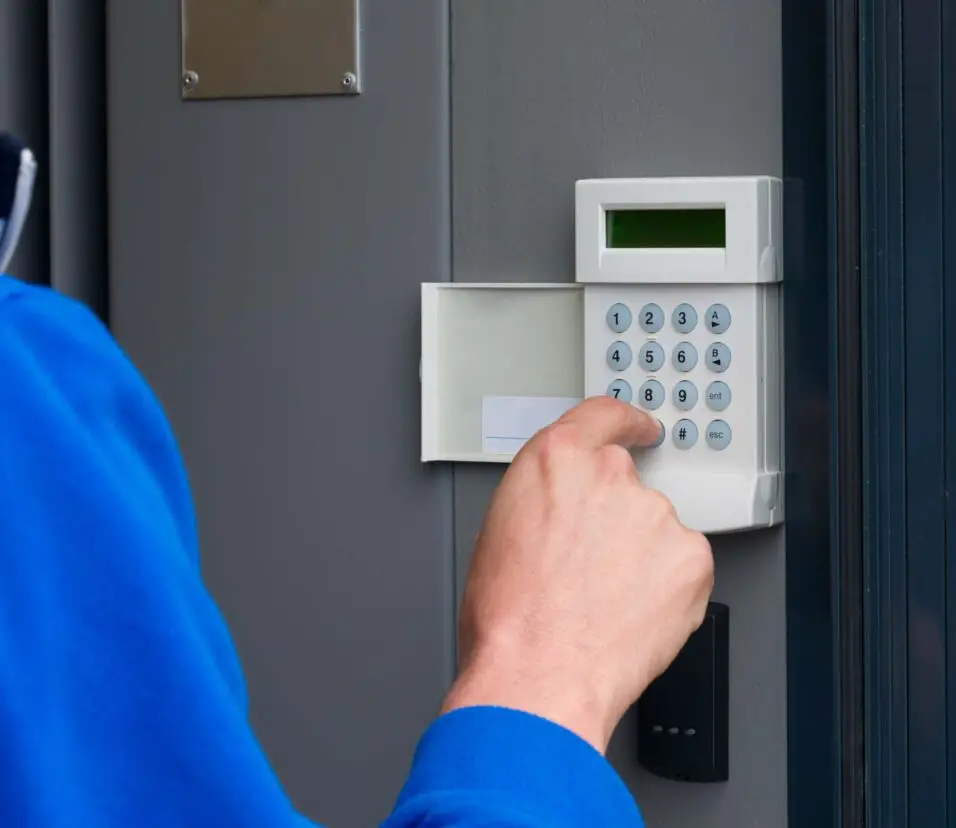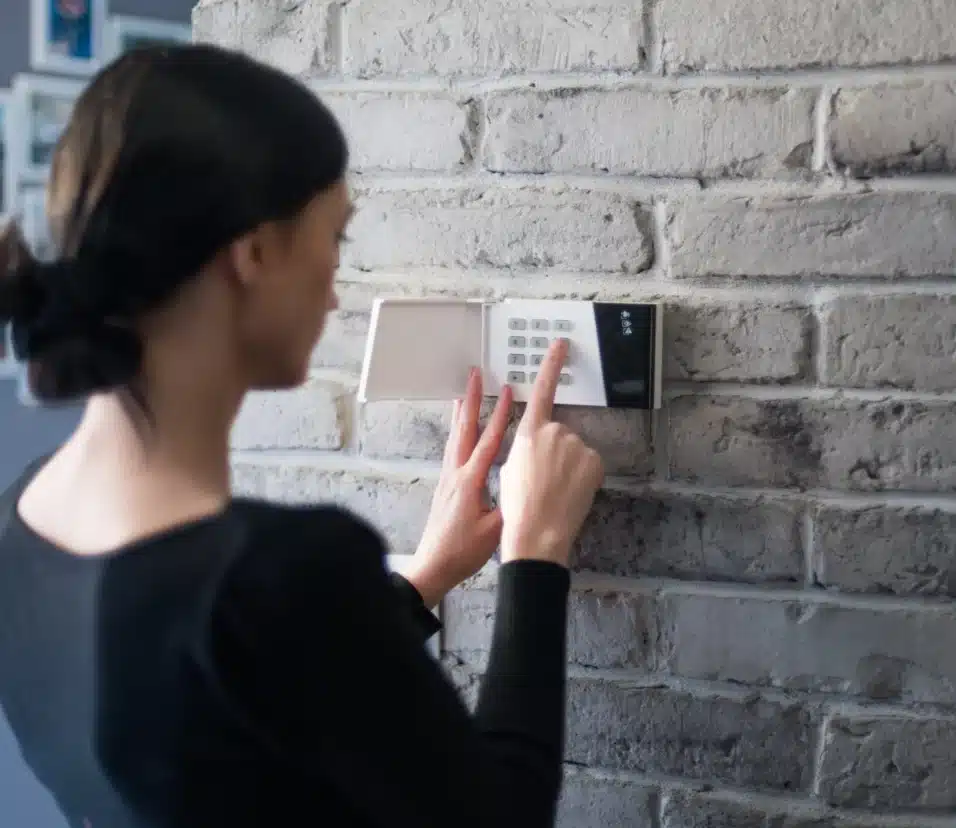How Do Home Security Systems Work
Introduction
How Do Home Security Systems Work: Home security systems are becoming increasingly popular as homeowners seek to protect their properties and loved ones from potential threats. These systems provide peace of mind by monitoring and alerting homeowners to any suspicious activity or emergencies that may occur. But how exactly do home security systems work.
At their core, home security systems are designed to detect and deter intruders. They consist of a network of sensors, cameras, and alarms that work together to create a comprehensive security solution. When an intruder attempts to enter a home, the sensors detect their presence and trigger an alarm, alerting the homeowner and potentially scaring off the intruder.
One of the key components of a home security system is the control panel. This is the central hub that connects all the different elements of the system and allows homeowners to monitor and control their security settings. From the control panel, homeowners can arm or disarm the system, view live camera feeds, and receive notifications of any security breaches.
Another important feature of home security systems is the use of motion sensors. These sensors are strategically placed throughout the home and are designed to detect any movement. When a sensor is triggered, it sends a signal to the control panel, which then activates the alarm.
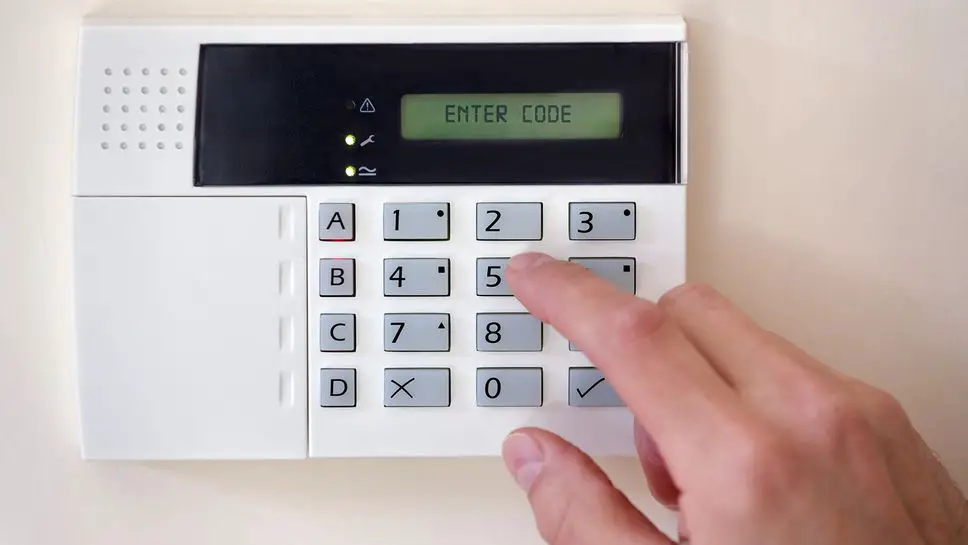
How do cellular home security systems work?
Only unique radio frequencies connect your sensors to your control panel wirelessly. Cellular alarm systems notify the monitoring station via cellular links (such text messages) instead of an internet connection or landline phone when the alarm is triggered.
The lack of a landline or internet connection is a major benefit of cellular home security systems. This allows the security system to connect with the monitoring center even when the power or internet goes off. This improves cellular system reliability and reduces tampering.
Cellular home security systems generally allow remote access and control in addition to security monitoring. This lets homeowners arm or disarm the system, receive notifications, and see live video from their smartphones or other internet-connected devices. These features give homeowners peace of mind and convenience.
How are home security systems powered?
Your home alarm system is a “low vol”, or low voltage system. These systems are not wired directly in to your house power, but are powered from your wall electricity by a large transformer. This is basically an AC power adapter and a backup battery found in a panel box installed in your home.
There are several ways in which home security systems can be powered. One common method is through a direct connection to the home’s electrical grid. In this setup, the security system is wired directly into the electrical system of the house, drawing power from the main electrical panel. This ensures a constant supply of electricity and eliminates the need for batteries or alternative power sources.
In addition to direct electrical connections and battery backup, some home security systems also utilize solar power. Solar-powered security systems harness energy from the sun through solar panels installed on the exterior of the house. These panels convert sunlight into electricity, which is then used to power the security system. Solar-powered systems are an eco-friendly option and can be particularly useful in remote areas where access to the electrical grid may be limited.
How does the first home security system work?
The first home security system was developed in the early 20th century and has since evolved significantly. It was designed to protect homes from burglaries and intrusions by alerting homeowners and authorities to any unauthorized entry.
The first component of the home security system was the door and window sensors. These sensors were placed on all entry points of the home, including doors and windows. They were designed to detect any movement or opening of these entry points. When a door or window was opened, the sensor would send a signal to the central control panel, which would then trigger an alarm.
The second component of the system was the motion detectors. These detectors were placed in key areas of the home, such as hallways and living rooms. They were designed to detect any movement within their range. If a motion detector detected any movement, it would also send a signal to the central control panel, which would then trigger an alarm.
The third component of the system was the central control panel. This panel was the brain of the home security system. It received signals from the door and window sensors and motion detectors and was responsible for triggering the alarms. It also had a keypad that allowed homeowners to arm and disarm the system.
The final component of the system was the alarm. When the central control panel received a signal from a sensor or detector, it would activate the alarm. The alarm could be a loud siren or a silent alarm that would notify the authorities. This would alert the homeowners and scare off any potential intruders.
What is home security system short note?
Home security systems guard against burglars and other intruders with networks of integrated electronic devices and a central control panel. Simple home security systems have a control panel or base station with a keypad. Sensors for doors and windows. A motion sensor.
A home security system is a network of devices and components that protects against burglaries, fires, and other calamities. Sensors, cameras, alarms, and a control panel let homeowners monitor and operate the system.
Intruder detection and deterrence are home security’s major goals. When doors and windows are unlocked or broken, sensors can alarm the homeowner and/or a monitoring center. This can deter burglars and alert authorities.
A home security system is a network of devices and components that protects it from dangers. By monitoring and protecting against intruders, fires, and other crises 24/7, it gives homeowners peace of mind and safety.
How many types of home security systems are there?
So, to cap this post off, let’s recap the four main types of security systems: Monitored security systems (company-monitored or self-monitored) Unmonitored security systems. Wired security systems.
There are several types of home security systems available in the market today. These systems are designed to protect your home and provide you with peace of mind. Whether you live in a house or an apartment, there is a home security system that can meet your needs and budget.
One of the most common types of home security systems is the burglar alarm system. This system is designed to detect unauthorized entry into your home and alert you and the authorities. It typically includes sensors on doors and windows, as well as motion detectors inside the home. When an intruder is detected, the alarm will sound and a signal will be sent to a monitoring center.
Wireless home security systems are also becoming increasingly popular. These systems use wireless technology to connect the various components of the system, such as sensors and cameras. This eliminates the need for extensive wiring and makes installation easier. Wireless home security systems are also more flexible, as they can be easily expanded or moved to a new location.
In addition to these types of home security systems, there are also specialized systems available for specific needs. For example, if you have a pool, you may want to consider a pool alarm system that will alert you if someone enters the pool area. Similarly, if you have elderly or disabled family members, you may want to invest in a medical alert system that can summon help in case of an emergency.
A home security system typically consists of several main components that work together to provide comprehensive protection for your home.
These components include:
1. Control Panel: This is the central hub of the security system, where you can arm or disarm the system and manage various settings.
2. Sensors: These are placed on doors and windows to detect any unauthorized entry. They can be magnetic sensors, motion sensors, or glass break sensors.
3. Cameras: Surveillance cameras are an essential part of a home security system. They provide visual monitoring and recording of activities in and around your home.
4. Alarms: Alarms are triggered when a sensor detects a breach. They can be loud sirens or silent alarms that notify the monitoring center.
5. Keypad or Key Fob: These devices allow you to control the security system remotely, such as arming or disarming it without having to go to the control panel.
6. Monitoring Service: Many home security systems offer professional monitoring services. In case of an alarm, the monitoring center is notified and can dispatch emergency services if needed.
By combining these components, a home security system can provide a comprehensive and effective solution to protect your home and loved ones.
How do home security systems detect intruders?
Home security systems use a variety of methods to detect intruders and protect your home. One common method is through the use of motion sensors. These sensors are typically placed in strategic locations throughout the home and can detect any movement or changes in the environment. When an intruder is detected, the motion sensor sends a signal to the control panel, which then triggers an alarm.
Another method used by home security systems is through the use of door and window sensors. These sensors are placed on doors and windows and can detect when they are opened or closed. If a door or window is opened while the system is armed, an alarm will be triggered. Some advanced systems even have sensors that can detect the sound of breaking glass, providing an additional layer of protection.
Can home security systems be customized to fit different types of homes?
Yes, home security systems can be customized to fit different types of homes. Every home is unique in terms of layout, size, and specific security needs, so it is important for a security system to be adaptable. Whether you live in a small apartment or a large house, there are options available to tailor the system to your specific requirements.
One way that home security systems can be customized is through the selection of different sensors and devices. For example, if you have a large property with multiple entry points, you may want to install additional door and window sensors to ensure comprehensive coverage. On the other hand, if you live in a smaller space, you may opt for a more compact system with fewer sensors.
Additionally, home security systems can be customized based on the level of monitoring and control desired. Some systems offer basic monitoring services, where alerts are sent to the homeowner’s smartphone in case of an alarm. Others provide professional monitoring services, where a monitoring center is notified and can dispatch emergency services if necessary. The level of monitoring can be chosen based on individual preferences and budget.
Are there any additional features or technologies that can enhance the effectiveness of a home security system?
Yes, there are several additional features and technologies that can greatly enhance the effectiveness of a home security system. One such feature is video surveillance, which allows homeowners to monitor their property in real-time and record any suspicious activities. This can be especially useful in identifying intruders or providing evidence in case of a break-in.
Another technology that can enhance the effectiveness of a home security system is home automation. With home automation, homeowners can control various aspects of their security system, such as arming or disarming it, remotely through their smartphones or other devices. This not only adds convenience but also ensures that the system is always armed when needed.
How do home security systems communicate with homeowners or monitoring centers in case of an emergency?
Home security systems use various methods to communicate with homeowners or monitoring centers in case of an emergency. One common method is through a landline telephone connection. This allows the homeowner or monitoring center to be notified of the emergency and take appropriate action.
In addition to landline connections, many home security systems now offer wireless communication options. These systems use cellular networks to transmit alarm signals to the monitoring center.
Some home security systems also offer internet-based communication. These systems use the homeowner’s internet connection to transmit alarm signals to the monitoring center. This can be a convenient option for homeowners who prefer not to rely on a landline or cellular network. However, it’s important to ensure that the internet connection is reliable and secure to prevent any potential vulnerabilities.
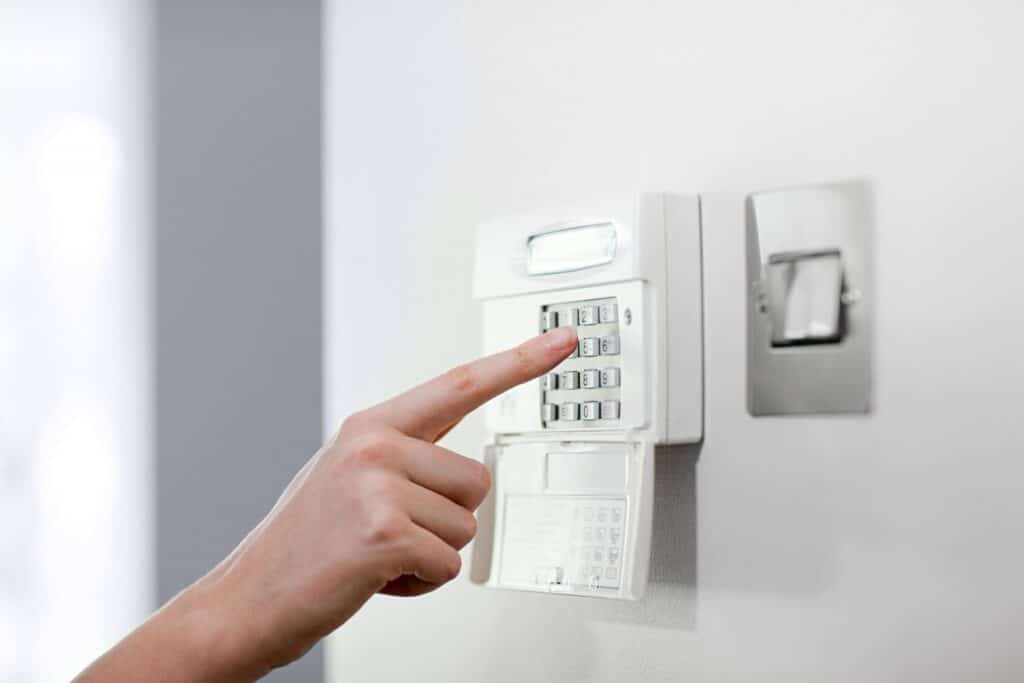
Conclusion
Home security systems play a crucial role in ensuring the safety and protection of our homes and loved ones. These systems work by utilizing a combination of advanced technologies and components to detect and deter potential intruders. By understanding the basic principles behind how home security systems work, homeowners can make informed decisions when it comes to selecting and installing the right system for their needs.
Home security systems often incorporate surveillance cameras, which provide an additional layer of protection by capturing video footage of any suspicious activity. These cameras can be placed both indoors and outdoors, allowing homeowners to monitor their property remotely and providing valuable evidence in the event of a break-in or other security incident. Some advanced systems even offer features such as facial recognition and live streaming, further enhancing the effectiveness of the surveillance.
Home security systems are a vital investment for homeowners looking to protect their property and loved ones. By understanding the basic principles behind how these systems work, homeowners can make informed decisions when it comes to selecting and installing the right system for their needs. With the advancements in technology, home security systems continue to evolve, offering more sophisticated features and capabilities to ensure the highest level of security and peace of mind.



